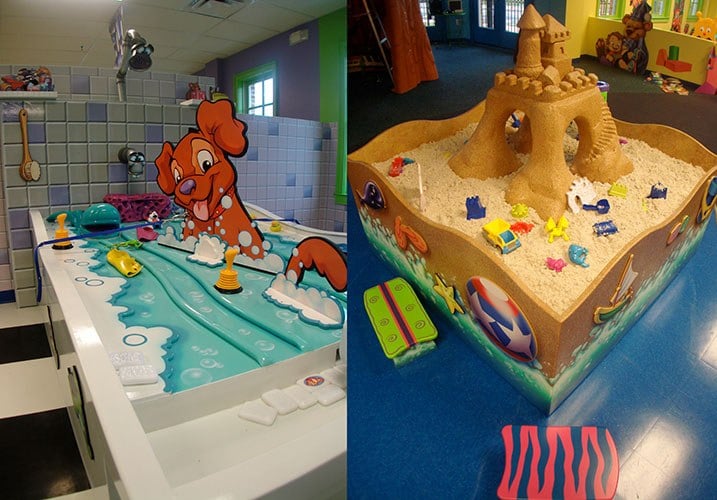Inclusive Design, Design Principles
Active vs Passive Play
July 19, 2023
We are passionate about designing inclusive play environments so that all children can have equitable opportunities to reap the benefits of play. Our goal is to support the developmental needs of the whole child by incorporating active and passive play areas with carefully selected activities that support child development. It is important to consider how children of all abilities can engage in truly meaningful and memorable play experiences in every aspect of the environment. These spaces should be crafted to encourage participation and socialization between children with and without disabilities by offering opportunities that address their physical, social-emotional, cognitive, sensory, or communication needs.
When designing with inclusion in mind, it's important to thoughtfully organize the environment with both active and passive areas so that the space is simple and intuitive, making it easy to understand. This allows children to be successful and gain confidence through play. Defined play settings create a well-organized play environment with established, easy to recognize areas that intentionally reinforce appropriate play patterns and set clear expectations. Defining areas for active and passive play allows children to remain immersed in play experiences that meet their diverse needs and interests, while avoiding user conflict.Active play settings are designed to promote healthy physical activity and gross motor development. Climbing structures, slides, swings, balance beams and other activities that promote fitness and movement encourage exploration and support developmentally appropriate skill development through a variety of challenge levels. Consider defining heavy use areas such as swing settings and slides exits by strategically using color, patterns, or texture to help visually organize these highly active areas. This positively reinforces developmentally appropriate play behaviors and helps avoid user conflict by demonstrating that play participants should use caution in high activity areas.
It is important to offer equitable play activities or alternatives throughout the environment so that all users can participate at their own skill level. Create parallel play experiences in which children with disabilities can engage in side-by-side activities that offer a choice and flexibility in how they participate. Inclusive environments accommodate everyone’s right to play to the greatest extent possible. Active play settings should provide accessible routes of travel and other accommodations such as transfer areas or platforms and/or adaptive handholds or rails to encourage independence and ensure that all children feel included. When children with disabilities are actively engaged in a diverse assortment of play opportunities, they can explore their environment, develop gross/ fine motor skills and coordination, and learn about the world around them.
On the other hand, passive play settings are equally important in designing inclusive play environments. Passive play settings offer areas for children to play on their own or gather with friends. These areas are intended for social-emotional development and learning and provide opportunities for socialization, relaxation, and observation. Sensory gardens, music panels, play panels, water/sand play, and dramatic play activities offer rich play experiences for children of all abilities. These areas should be organized near other similar areas that can further enhance play experiences. For example, a themed play area that resembles a store or restaurant could be positioned near a table and seats to encourage children to pretend and foster communication.
Inclusive playgrounds can provide a safe and welcoming space for children of all abilities to play and socialize. Both active and passive play settings are essential components of an inclusive play space, but finding the right balance is crucial. It's important to consider the age range of the children who will be using the space when designing these settings. Younger children may enjoy more passive play settings, such as pretend play or sensory boxes, while older children may seek more challenging gross motor play settings, such as higher climbing structures and slides. It's important to provide a variety of options that cater to the needs and interests of children of all ages and abilities.


